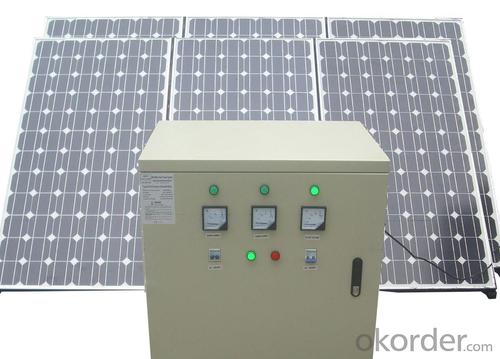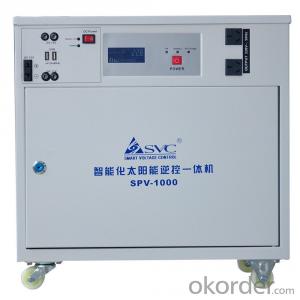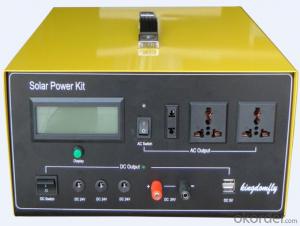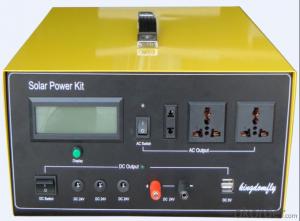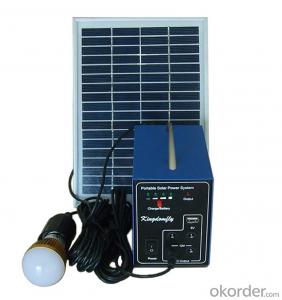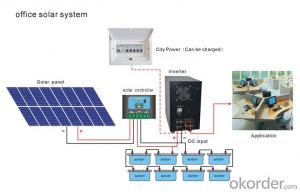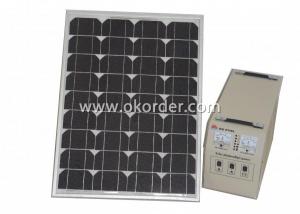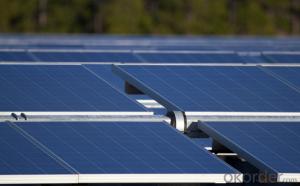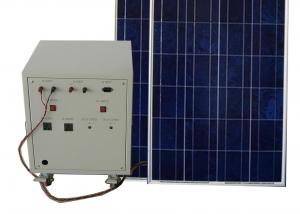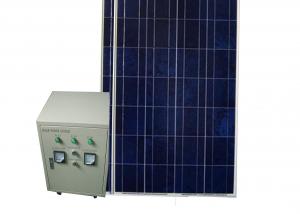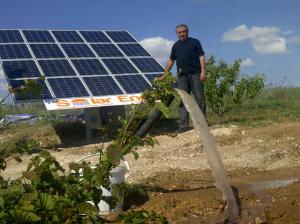CNBM Solar Home System CNBM-K6 (1KW) - Solar Energy Systems Perth
- Loading Port:
- China Main Port
- Payment Terms:
- TT or L/C
- Min Order Qty:
- 1 set set
- Supply Capability:
- 1000 sets per month set/month
OKorder Service Pledge
OKorder Financial Service
You Might Also Like
Brief Introduction of Solar Energy System CNBM-K6 (1KW)
CNBM Home System-K6 (1KW) has a wonderful capacity.It can be used in factory,home,school and other CNBM Home System-K6 (1KW) consist of the solar modules,charge controller,inverter and battery banks.
CNBM International is highly recognized by its business partners and clients all over the world and has obtained rapid development under the spirit of win-win .
With CNBM Home System-K6 (1KW),
We will carry on the mutual beneficial,innovative and revolutionary trading structure as we did before,create value for our employees,share holders and clients and benefit the whole society in our future development.Please contact us ,if you have interest in CNBM Home System-K6 (1KW),don’t hesitate!
The Sketching of Solar Energy System CNBM-K6 (1KW)
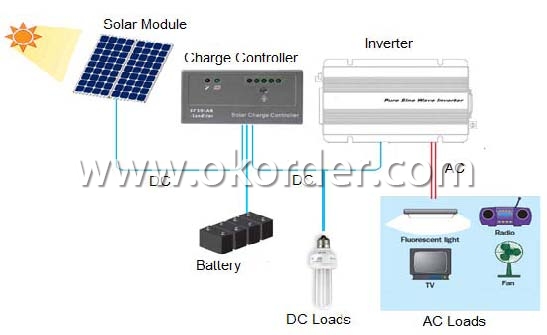
Components of Solar Energy System CNBM-K6 (1KW)
PV Array:
Convert sunlight instantly into DC electric power. Formed by the solar modules (also called photovoltaic modules) in accordance with the system requirements for series and parallel.
Solar Charge Controller:
A charge controller may be used to power DC equipment with solar panels. The charge controller provides a regulated DC output and stores excess energy in a battery as well as monitoring the battery voltage to prevent over charge or over discharge. An inverter can be connected to the output of a charge controller to drive AC loads.
Inverter:
Converts DC output power of photovaltaic soalr panels into standard AC power for use in the local off-grid electrical network. It is a critical component in a photovoltaic system, allowing the use of ordinary commercial appliances.
Battery banks:
Stores energy when there is an excess coming in and distribute it back out when there is a demand. Solar PV panels continue to re-charge batteries each day to maintain battery charge.
Technical data of Solar Home System CNBM-K6 (1KW) | ||
Inverter | Rated load power | 1500W |
Output wave | Pure sine wave | |
Output voltage | DC 24V | |
Output frequency |
AC:220V | |
Precision of output | 50HZ/60HZ | |
Precision of output frequency | ±6% | |
Solar panel | Pmax | 165W*6PCS |
Vmp | 36V | |
Imp | 4.58A*6 | |
Charger | Charger voltage & current | 24V /20A*3 |
Battery | Capacity | 12V 250AH*2PCS |
Power box | Spray paint iron box,with input,output,ammeter,voltmeter,master swith and so on. | |
Package of Solar Home System CNBM-K6 (1KW) | ||||
Part | Size(L*W*H mm) | Weight(kg) | 20’(pcs) | 40’(pcs) |
Power box | 800*540*780 | 70 | 48 Sets | 65 Sets |
Solar panel | 1600*830*90 | 90 | ||
Battery | 540*520*350 | 200 | ||
Factory Picture of Solar Energy System CNBM-K6 (1KW)
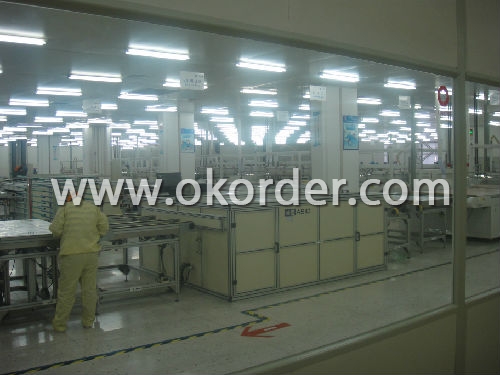
Package Picture of Solar Energy System CNBM-K6 (1KW)

- Q: Can solar energy systems be used for powering sports stadiums?
- Yes, solar energy systems can definitely be used for powering sports stadiums. With their large open spaces and high electricity needs, sports stadiums are ideal candidates for solar installations. Solar panels can be installed on the stadium roof or in nearby open areas to capture sunlight and convert it into electricity. This renewable energy source can help stadiums reduce their reliance on traditional power grids, lower their carbon footprint, and potentially even generate excess energy that can be fed back into the grid.
- Q: How does the efficiency of solar panels vary across different roof types?
- Solar panel efficiency can differ depending on the type of roof due to various factors. One of the primary factors is the roof's orientation and tilt. Solar panels work best when they face the sun directly, ideally at a tilt that matches the latitude of the location. Consequently, roofs that face south and have an appropriate tilt generally have higher efficiency. Roof shading is another important consideration. If trees, buildings, or other objects cast shadows on the roof, it can significantly reduce the efficiency of solar panels. Even partial shading on a small part of the roof can impact the overall performance of the entire solar system. The material and condition of the roof can also affect efficiency. Certain roof materials, like metal or asphalt shingles, can reflect sunlight and improve the overall efficiency of solar panels. Conversely, roofs covered in dirt, debris, or damaged areas may lower efficiency as they can obstruct or hinder the absorption of sunlight. The size and shape of the roof also play a role. Roofs with more surface area can accommodate more solar panels, generating more electricity. Additionally, roofs with simple shapes, such as flat or slightly sloped roofs, are generally more suitable for efficient solar panel installation compared to complex roof designs with numerous angles and obstacles. Lastly, local climate and weather patterns can impact solar panel efficiency. Areas with abundant sunlight throughout the year typically have higher efficiency compared to regions with frequent cloud cover or limited sun exposure. In conclusion, solar panel efficiency can vary depending on factors such as orientation, shading, roof material and condition, size and shape, as well as local climate and weather patterns. Seeking guidance from a solar professional can help determine the optimal solar panel system for a specific roof type, maximizing energy production and efficiency.
- Q: Can solar energy systems be used for powering amusement parks?
- Yes, solar energy systems can definitely be used for powering amusement parks. With the advancements in solar technology and the ability to harness and store solar energy, amusement parks can install solar panels to generate electricity and meet their power requirements. Solar energy systems can be integrated into the park's infrastructure, such as on rooftops, parking lots, or open spaces, to provide clean and sustainable energy for rides, lighting, and other operational needs. Additionally, solar power can help reduce carbon emissions and operating costs, making it an environmentally friendly and economically viable solution for powering amusement parks.
- Q: Can solar energy systems be used in powering retirement homes or assisted living facilities?
- Yes, solar energy systems can certainly be used to power retirement homes or assisted living facilities. In fact, solar energy can be a highly beneficial and cost-effective solution for these types of facilities. Retirement homes and assisted living facilities have a high energy demand due to the need for heating, cooling, lighting, and various electrical appliances. By installing solar panels on the rooftops or in suitable areas, these facilities can generate their own electricity and reduce their reliance on the grid. Solar energy systems can help these facilities reduce their operating costs significantly, as they can offset a considerable portion of their electricity bills. This is especially important for retirement homes and assisted living facilities, as they often operate on tight budgets and need to allocate resources efficiently. By harnessing solar power, these facilities can redirect the saved funds towards providing better care and services for their residents. Furthermore, solar energy systems contribute to a cleaner and greener environment. Retirement homes and assisted living facilities have a responsibility towards their residents' well-being, and by using solar power, they can reduce their carbon footprint and promote sustainability. This can have a positive impact on the health and overall quality of life for the residents. Additionally, solar energy systems can provide a reliable source of power during emergencies or power outages. Particularly in areas prone to extreme weather events, where power disruptions are more common, having a solar energy system with battery storage can ensure continuous and uninterrupted power supply to critical areas such as medical equipment, lighting, and HVAC systems. In conclusion, solar energy systems are a viable and beneficial option for powering retirement homes or assisted living facilities. They can significantly reduce operating costs, promote sustainability, and provide a reliable source of power, ultimately improving the quality of care and services provided to residents.
- Q: What is the impact of bird droppings on solar panel efficiency?
- Bird droppings have a negative impact on solar panel efficiency as they can block sunlight from reaching the surface of the panels, reducing their ability to generate electricity. Regular cleaning and maintenance are necessary to ensure optimal performance and prevent any long-term damage.
- Q: Can solar energy systems be used for powering security cameras?
- Yes, solar energy systems can definitely be used to power security cameras. Solar panels can convert sunlight into electricity, which can then be stored in batteries or used directly to power various devices, including security cameras. This makes solar energy an ideal and sustainable solution for remote or off-grid locations where running electrical cables may be difficult or costly. Additionally, solar-powered security cameras can operate continuously without interruption, as long as there is enough sunlight to generate electricity. This makes them a reliable and eco-friendly choice for surveillance systems.
- Q: How do solar energy systems affect the installation of satellite dishes?
- Solar energy systems can potentially affect the installation of satellite dishes by obstructing the line of sight between the dish and the satellite. It is important to carefully plan and position both the solar panels and satellite dish to ensure they do not interfere with each other.
- Q: Can solar energy systems be used for swimming pool heating?
- Yes, solar energy systems can be used for swimming pool heating. Solar panels can be installed to capture sunlight and convert it into heat energy, which can then be used to warm the pool water. This is a cost-effective and environmentally friendly way to heat swimming pools, as it reduces reliance on traditional heating methods that consume fossil fuels.
- Q: How do solar energy systems contribute to energy independence?
- Solar energy systems contribute to energy independence by harnessing the power of the sun to generate electricity. This renewable energy source reduces our reliance on fossil fuels, which are finite and contribute to climate change. By generating clean and sustainable energy, solar systems help countries and individuals become less dependent on imported energy sources, promoting self-sufficiency and reducing the vulnerability to price fluctuations and geopolitical tensions associated with fossil fuel imports.
- Q: Can a solar energy system be installed on a sloped roof?
- Yes, a solar energy system can be installed on a sloped roof. In fact, sloped roofs are quite common for solar panel installations. The angle and orientation of the roof can actually have a positive impact on the system's efficiency. By tilting the solar panels at an optimal angle, it allows for better sunlight absorption and maximizes the energy generation. Additionally, the slope of the roof can help with self-cleaning as rainwater can easily wash away any dirt or debris that may accumulate on the panels. However, it is important to consider the structural integrity of the roof and ensure that it can support the weight of the solar panels.
Send your message to us
CNBM Solar Home System CNBM-K6 (1KW) - Solar Energy Systems Perth
- Loading Port:
- China Main Port
- Payment Terms:
- TT or L/C
- Min Order Qty:
- 1 set set
- Supply Capability:
- 1000 sets per month set/month
OKorder Service Pledge
OKorder Financial Service
Similar products
Hot products
Hot Searches
Related keywords



